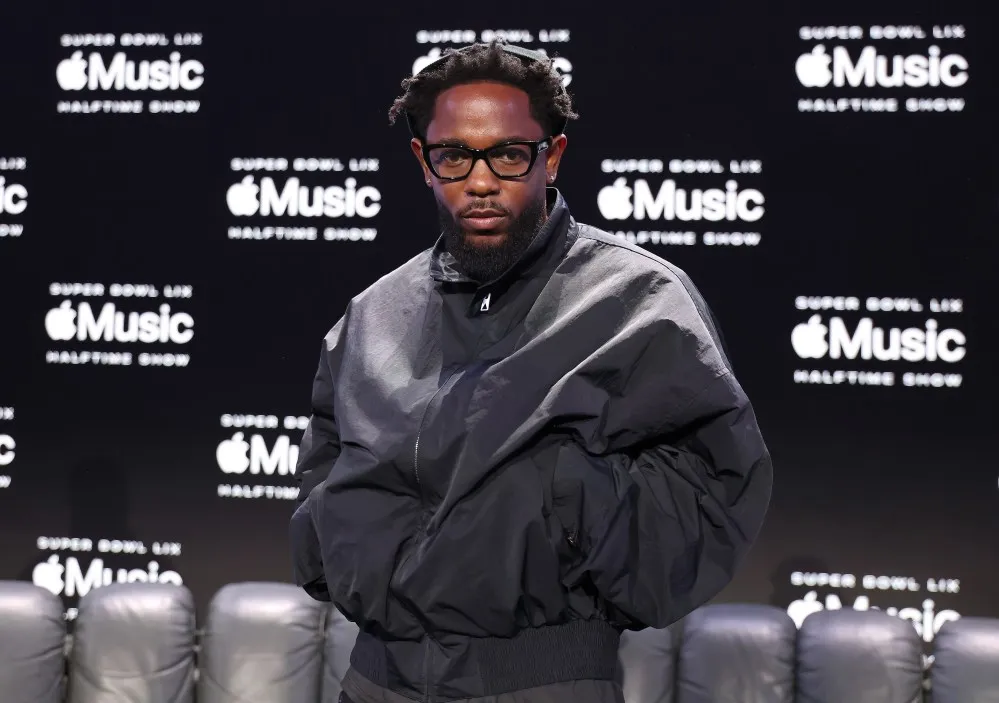

From a Compton Kid to a Hip-Hop Legend: Kendrick Lamar’s Unbelievable Journey!
Kendrick Lamar Duckworth was born on June 17, 1987, in Compton, California, one of the most notorious cities in America, known for its gang violence, crime, and police brutality. The streets were ruled by Bloods and Crips, and survival often depended on choosing the right side.
Despite growing up in such a dangerous environment, Kendrick’s life took a different path. He wasn’t a gangster—he was an observer, someone who soaked in the struggles, the pain, and the harsh realities of his community. Instead of turning to crime, he found solace in hip-hop, writing lyrics that captured the essence of Black struggle, systemic oppression, and survival in urban America.
He was heavily influenced by rap legends Tupac Shakur, Dr. Dre, Nas, and Jay-Z, artists known for their deep, socially conscious lyrics. At just eight years old, Kendrick witnessed Tupac and Dr. Dre filming the iconic “California Love” music video in Compton, an experience that sparked his dream of becoming a rapper.
Early Career: From Mixtapes to Top Dance Entertainment
By 2003, at just 16 years old, Kendrick released his debut mixtape, “Youngest Head Nigga in Charge,” under the rap alias K.Dot. Though the project was underground, it showcased his incredible wordplay, sharp delivery, and introspective lyrics, earning him recognition in the local rap scene.
His talent caught the attention of Top Dawg Entertainment (TDE), an independent label in California that was scouting new talent. Kendrick signed with TDE and began refining his style, moving away from his K.Dot persona and embracing his real name.
Between 2005 and 2009, he released several mixtapes, including “Training Day” and “C4” (inspired by Lil Wayne’s “Tha Carter III”), but it was “Overly Dedicated” (2010) that truly put him on the map. The standout track, “Ignorance Is Bliss,” caught the attention of Dr. Dre, marking the beginning of Kendrick’s meteoric rise.
“Section.80”: Redefining Underground Hip-Hop
By 2011, Kendrick had transformed from a promising young rapper into a full-fledged artist. That year, he released his first independent studio album, “Section.80,” a concept album tackling poverty, racial discrimination, drug addiction, and government oppression.
The project was a critical success, praised for its jazz-influenced beats, intricate storytelling, and conscious lyricism. Tracks like “A.D.H.D.” and “HiiiPoWeR” (produced by J. Cole) cemented Kendrick’s reputation as one of the most intelligent and socially aware rappers of his generation.

“Good Kid, M.A.A.D City”—A” Modern Classic
Everything changed in 2012 when Kendrick released “Good Kid, M.A.A.D. City,” his major-label debut under Aftermath Entertainment and Interscope Records.
This wasn’t just an album—it was a cinematic experience, a concept record narrating Kendrick’s life as a teenager in Compton. Songs like “Swimming Pools (Drank)”, “Money Trees,” and “Bitch, Don’t Kill My Vibe” became instant classics, dominating the airwaves and streaming charts.
The album’s storytelling was next-level, portraying Kendrick as a young man caught between gang violence, peer pressure, and his desire for a better future. “Good Kid, M.A.A.D. City” went triple platinum, earning Kendrick multiple Grammy nominations and solidifying his status as the future of hip-hop.
“To Pimp a Butterfly”: A Cultural Revolution
If “Good Kid, M.A.A.D. City” made Kendrick a star, “To Pimp a Butterfly” (2015) made him a legend.
Blending jazz, funk, and spoken word poetry, this album was a musical masterpiece tackling deep themes of racial injustice, black empowerment, depression, and self-love. The album’s production featured legendary artists like George Clinton, Thundercat, and Terrace Martin, creating a unique sound unlike anything in modern rap.
The track “Alright” became the anthem for the Black Lives Matter movement, while “King Kunta” and “The Blacker the Berry” addressed issues of systemic racism and cultural identity.
The album received universal acclaim, winning Best Rap Album at the Grammys and being hailed as one of the greatest hip-hop albums of all time.
“DAMN.” Making History with a Pulitzer Prize
In 2017, Kendrick delivered yet another groundbreaking album, “DAMN,” proving his versatility as an artist.
Unlike its predecessor, “DAMN.” was more minimalist and aggressive, packed with hard-hitting beats and introspective lyrics. Songs like “HUMBLE,” “DNA,” and “LOVE.” showcased Kendrick’s ability to balance radio-friendly hits with deep, thought-provoking content.
The biggest milestone? Kendrick became the first rapper to ever win the Pulitzer Prize for Music, a historic achievement that cemented his legacy as more than just an entertainer—he was a literary and musical genius.
“Mr. Morale & The Big Steppers”: A Deep Dive into Mental Struggles
After a five-year hiatus, Kendrick returned in 2022 with “Mr. Morale & The Big Steppers,” an album exploring mental health, generational trauma, therapy, and the burdens of fame.
Unlike his past works, this album was deeply personal and introspective, featuring tracks like “N95,” “Father Time,” and “We Cry Together,” which painted a raw picture of his struggles with identity, relationships, and emotional healing.

Awards and Achievements: Redefining Hip-Hop Greatness
Kendrick’s impact on music is undeniable, with an astonishing list of accolades:
- 17 Grammy Awards
- 1 Pulitzer Prize for Music (first rapper to win it)
- Academy Award nomination for “All the Stars” (from Black Panther)
- Multiple BET, MTV, and Billboard Music Awards
- All of his albums reaching platinum or multi-platinum status
Kendrick Lamar’s Legacy: Rapper or revolutionary?
Kendrick Lamar isn’t just a rapper—he’s a cultural icon, a revolutionary, and a storyteller of the highest caliber.
Unlike many mainstream artists, Kendrick never chased fame or clout. He rarely uses social media, doesn’t flood the industry with singles, and doesn’t release music unless he has something important to say.
Every album he creates is a cultural moment, shifting the landscape of hip-hop and challenging the industry to think bigger. He’s not just making songs—he’s creating art that will be studied for decades.
What’s Next for Kendrick Lamar?
With his status as one of the greatest rappers of all time, fans eagerly anticipate what’s next for Kendrick Lamar. Though he left Top Dawg Entertainment after “Mr. Morale & The Big Steppers,” he has embarked on a new creative journey with his company, pgLang, alongside longtime collaborator Dave Free.
Rumors suggest Kendrick may explore film, storytelling, and deeper social activism, continuing to push artistic boundaries. Whether he drops another album or reinvents himself in a new medium, one thing is certain—his impact on music and culture is far from over.


















